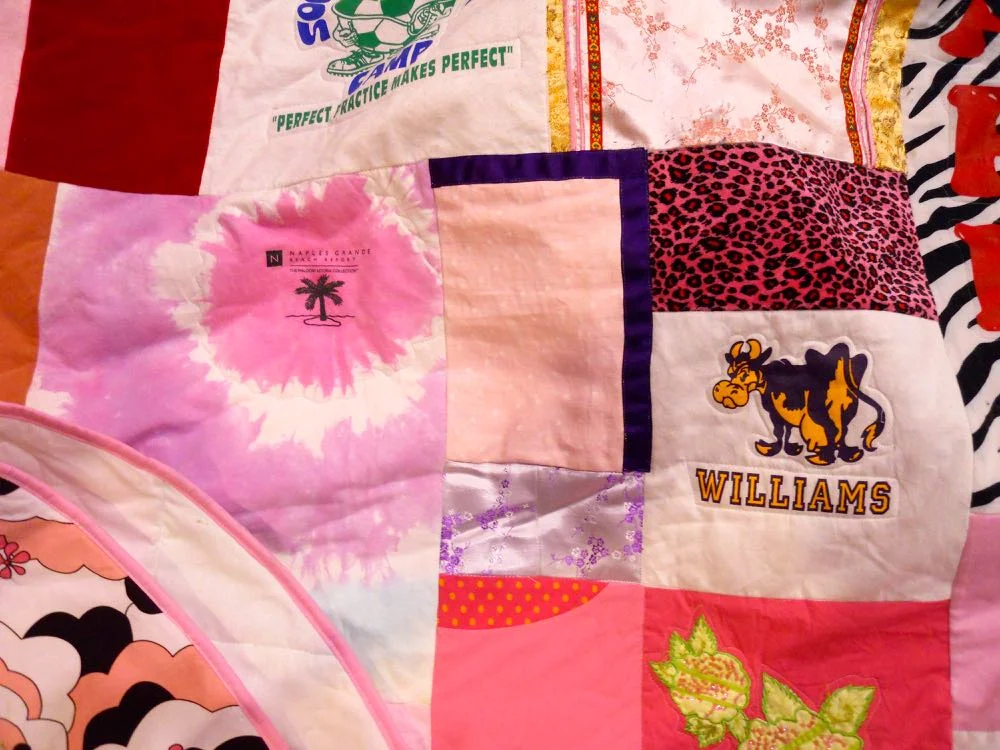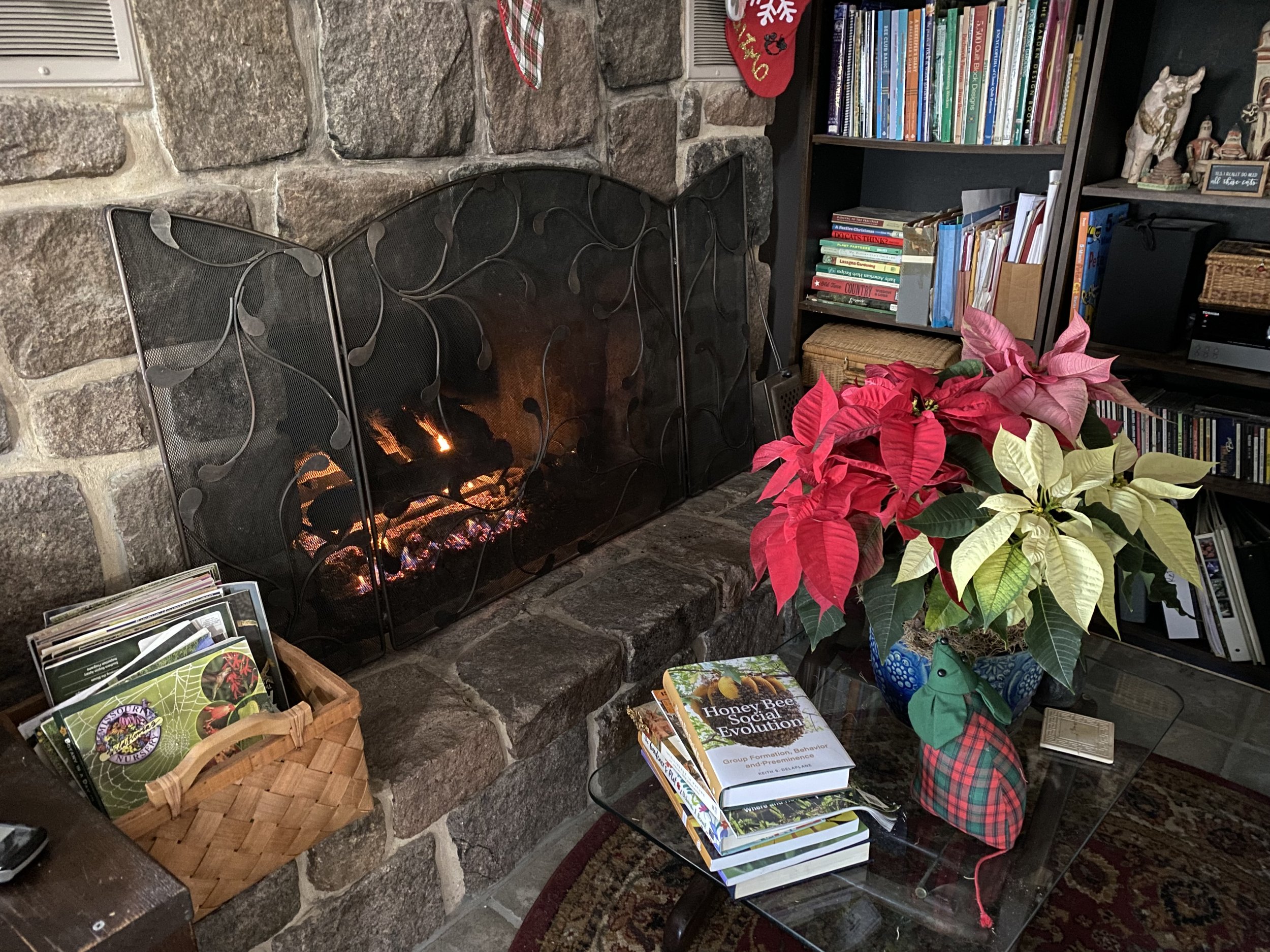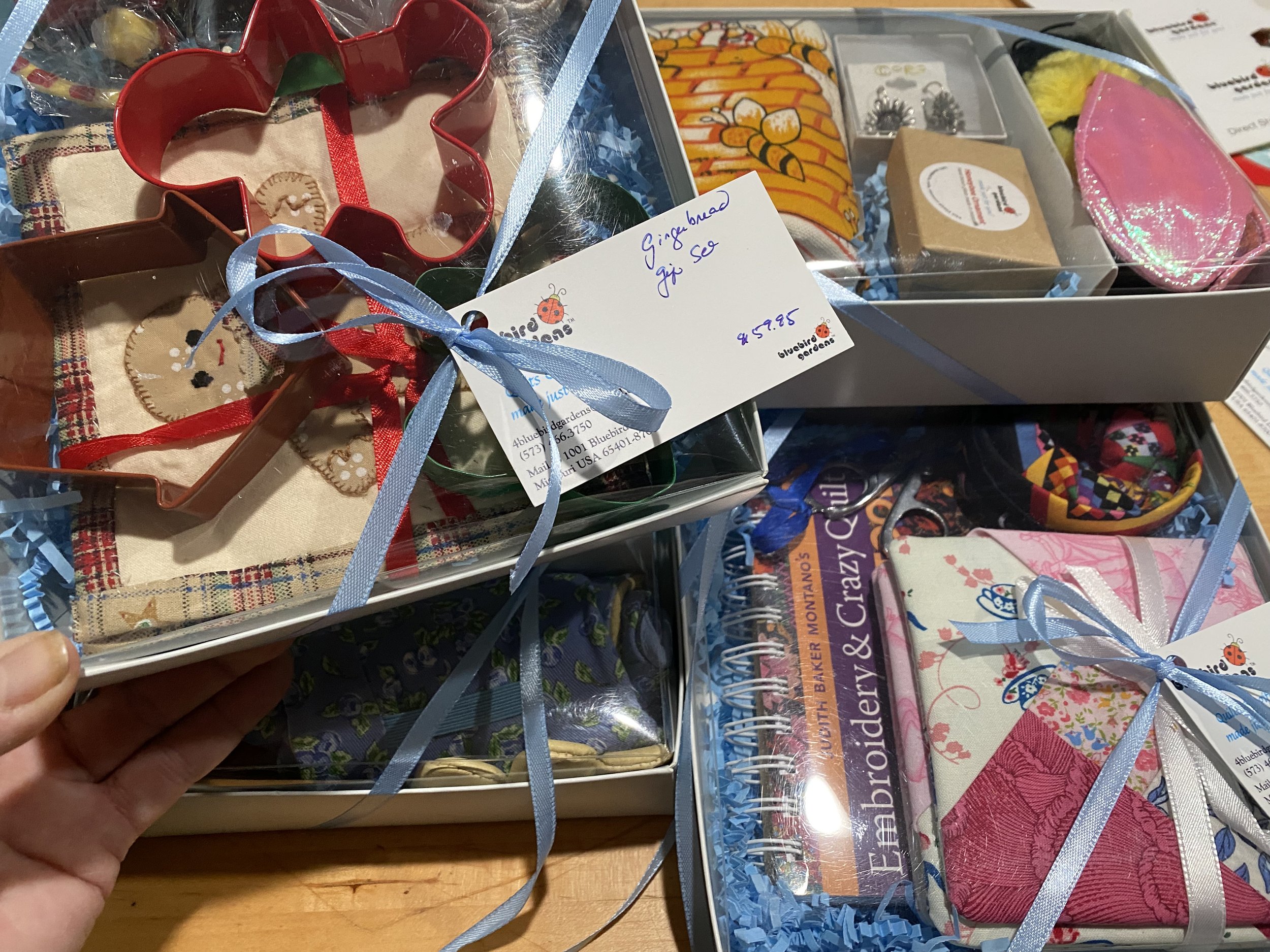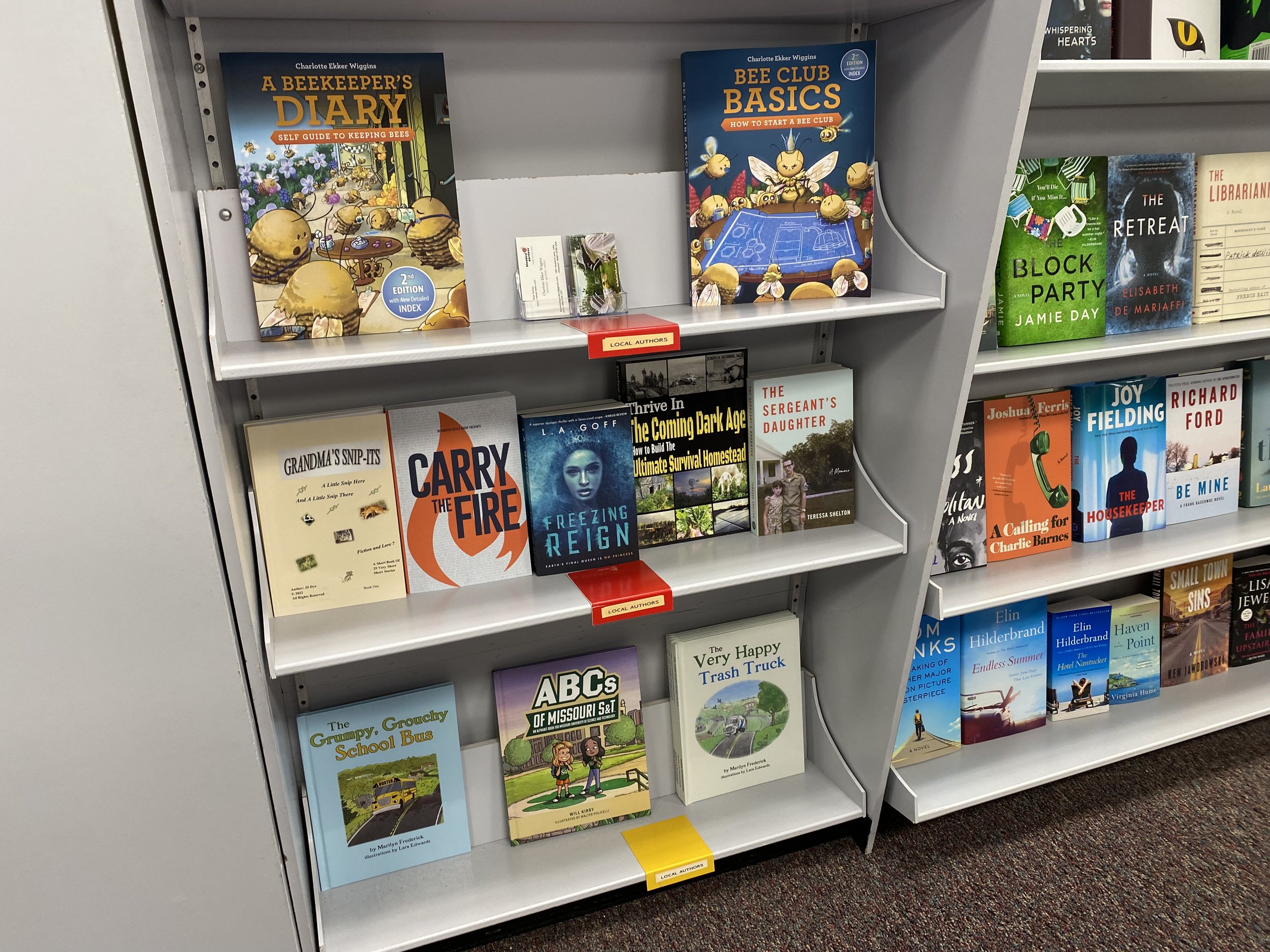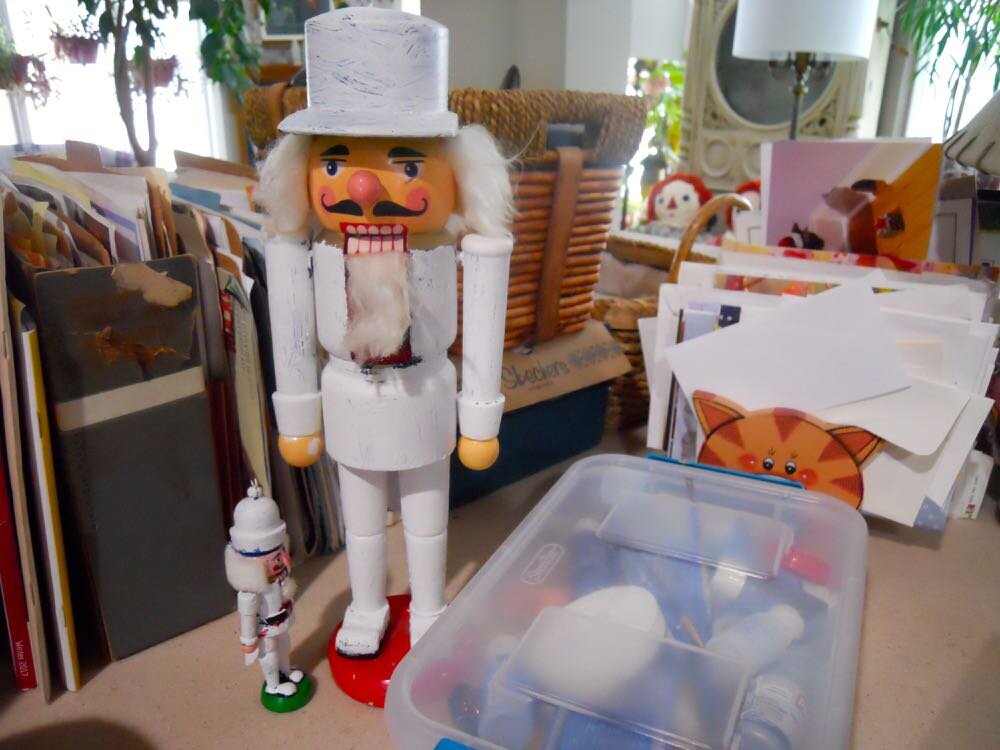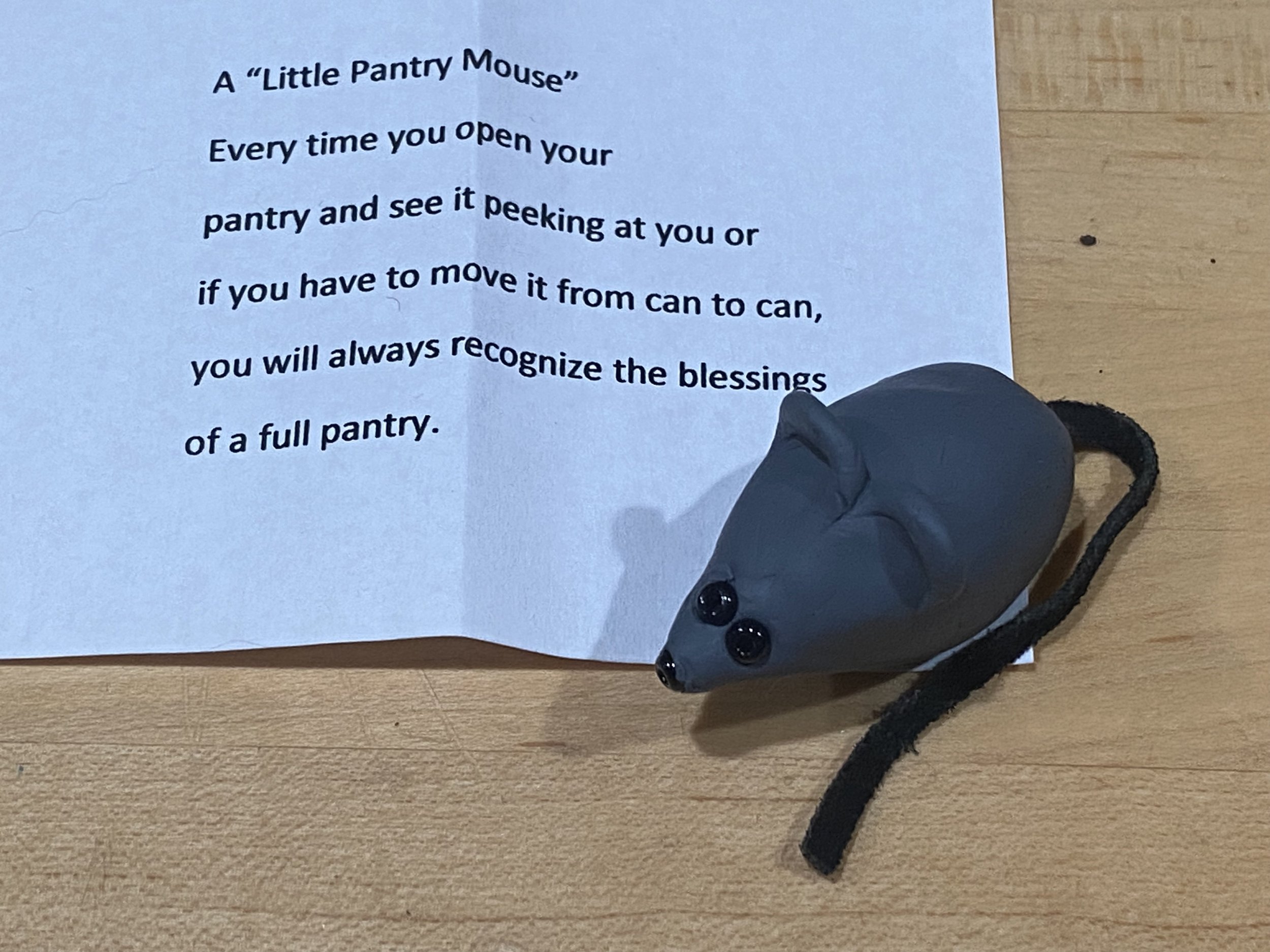Repairing Quilt Tears
/Even with stabilizing backing, stretch fabrics can develop wear spots and tears.
Repairing Quilt Tears
Every once in awhile, we get to see one of our custom quilts returned for repairs because they've been well-loved and used. That was the story behind this round custom quilt made out of t-shirts and other favorite clothing.
One of the shirts, a polkadot pink with white dots, tore along the longer side. Another couple of wear spots were developing on the short side of the block. The customer asked if there was some way we could replace the torn block with a new piece of clothing.
Taking a close look at the finished quilt, it was not possible to tear out the pink polkadot fabric so we did the next best thing. Selecting a piece of sturdy, all cotton gross grain cotton ribbon, I sewed the ribbon on two sides over the long tear to keep it from moving. Securing both sides will reduce either block from tearing and will hold the torn side together.
The same ribbon was sewn across the shorter side to cover the newly-developing wear spots.
Grossgrain ribbon is an excellent way to reinforce worn spots and repair tears.
Since several other quilt blocks had ribbons either in or along the side of the blocks, the purple gross grain ribbon fit right into the rest of the blocks.
If you don't want to use ribbon, you can make your own ribbon out of fabric reinforced with a stabilizer to ensure the fabric ribbon can handle the pressure.
The complimentary purple gross grain ribbon color blends right in with the rest of the blocks.
It was fun to see a custom quilt back and so well-loved. As I tell customers, quilts should be used, not stored away somewhere. And if there is a tear, there's usually a way to fix it!
Charlotte



